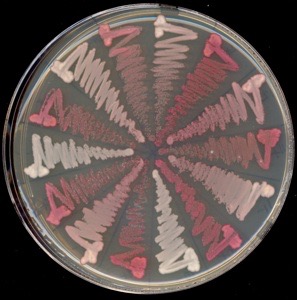Prions in yeast: How do they work? What can we learn from them?
Can this help us find prions in the genomes of other organisms? Can they help us understand human disease?

Prions are self-templating proteins, mostly amyloid in nature, that are infectious. “Mad Cow Disease” derives from the Prion Protein, PrP. It turns out there are a number of others that have been studied in the yeast, Saccharomyces cerevisiae. Probably, there are lots of others yet to be identified in mammals and other organisms. It may be a novel means of regulating gene function across all eukaryotes and even across all life.
I’ve worked to understand the amino acids that drive prion formation and propagation. This information has led us to a better understanding of this process, but there is still a long way to go.
A paper I published in 2015 catalogs what we’ve learned recently about prion propagation:
MacLea, K.S., Paul, K.R., Ben-Musa, Z., Waechter, A., Shattuck, J.E., Gruca, M., and Ross, E.D. Distinct amino acid compositional requirements for formation and maintenance of the [PSI+] prion in yeast. Mol Cell Biol, 35(5):899-911. doi: 10.1128/MCB.01020-14, 2015.
Right now, we’re also using our results to study potential prions and amyloid proteins in humans and other organisms. We’ve made some surprising discoveries! I look forward to working with students on a piece of these projects as we go forward and try to understand prions better.
It also turns out that yeast are a great organism to use in biology classes--easy, cheap, and fast to grow, easy to genetically manipulate, and amenable to all sorts of experiments that even beginning undergraduates can handle. And even better, these experiments can rapidly lead to posters, publications, and, most importantly, a better understanding of the natural world around us!
To read more about this field, see my article with Eric Ross about advances in identifying new prions:
MacLea, K.S. and Ross, E.D. Strategies for identifying new prions in yeast. Prion, 5(4):1-6, 2011.
Or read my recent Nature paper that demonstrates the utility of methods we’ve developed from yeast prions that are applicable to identifying disease-causing alleles in human diseases:
Kim, H.J., Kim, N., Wang, Y., Moore, J., Diaz, Z., Scarborough, E, Ugras, S., MacLea, K.S., et al. Mutations in prion-like domains found in hnRNPA2B1 and hnRNPA1 cause multisystem proteinopathy. Nature, doi:10.1038/nature11922, 495(7442):467-73, 2013.